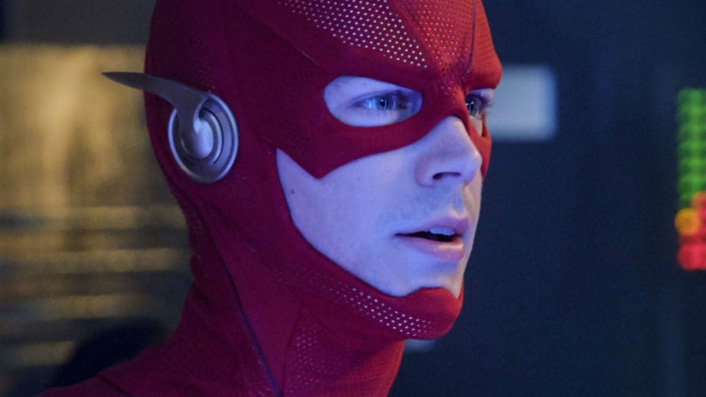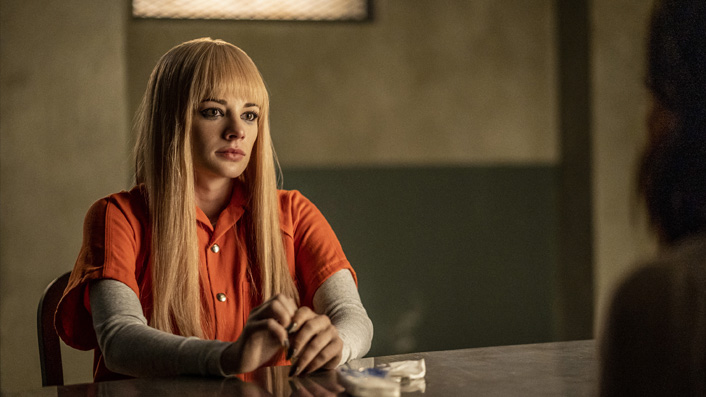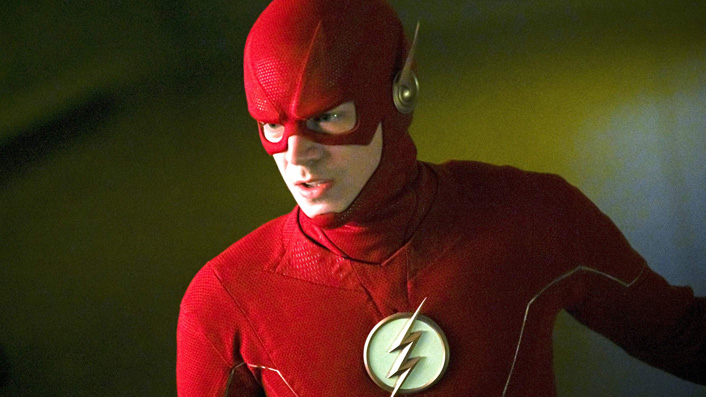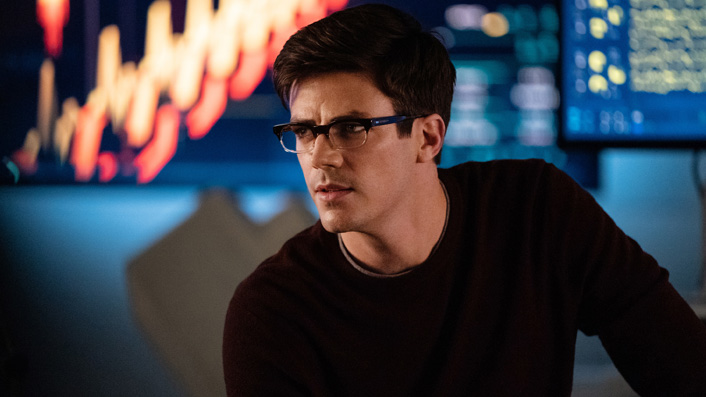TV’s romantic, earnest take on The Flash is the definitive live-action version

After its sixth season was disrupted by COVID-19, season 7 of The Flash is now streaming – watch it now on Neon. As Dominic Corry observes, The Flash has seen many nemeses come and go and never hesitates to upend the status quo.
In stark contrast to their often fraught and divisive big screen incarnations, the television versions of DC Comics’ most famous characters have been slowly amassing a humongous fan base that delights in the increasing complexity and breadth of what has become known as the Arrowverse.
See also:
* Films and shows now streaming on Neon
* Everything new to coming to Neon
Named for the series from which they all sprung, Arrow, the Greg Berlanti-produced DC shows happily truck along while Warner Bros. film executives fret and constantly overthink what to do with the world’s most recognisable superheroes in movie form.
With Arrow having finished up its eight season run last year, The Flash now stands as the longest-running DC show, and it forms the beating heart of the Arrowverse. It stands alongside the hopeful Supergirl, the loopy Legends of Tomorrow, and other small-screen portrayals of well and not-so-well-known DC characters.
Grant Gustin leads The Flash as Barry Allen, a police crime lab scientist who suits up as the titular alter-ego, a superhero (“meta-human” in the show’s parlance) who can run, like, really really fast thanks to being able to access something called the Speed Force. Allen also leads Team Flash, an evolving group of crime-fighting allies who assist Flash in his attempts to keep Central City safe from meta-human bad guys.

Pertinent members of Team Flash include Allen’s journalist wife Iris (Candice Patton), Caitlin Snow (Danielle Panabaker) who became the villainous meta-human Killer Frost (though she goes by the less-murdery ‘Frost’ these days), the quippy Cisco Ramon (Carlos Valdes), who had a spell as the meta-human Vibe, Ralph Dibny (Hartley Sawyer), a private detective who is also the stretchy meta-human Elongated Man and Nash Wells (Tom Cavanaugh), a scientist character with a history so convoluted we won’t dare try to encapsulate it here, but it should be known that he is currently infused with the memories and personalities of many different versions of himself from multiple dimensions.
Cavanaugh—an actor fondly recalled by fans of his 2000-2004 cult favourite series Ed—is one of the true delights of The Flash, and keeps atop the dynamic demands of the constantly transforming Wells with a spry sense of comedic charm.

Wells is an effective representation of series’ multi-dimensional, reality-warping nature, and with six seasons of mythology to build on (not to mention all the other crossover-happy Arrowverse shows), The Flash has seen many nemeses come and go, and it never hesitates to upend the status quo.
The Flash is a character famous for its crazy villains gallery, (Hello King Shark! Wassup Gorilla Grodd! Kia ora Reverse Flash!), arguably the most interesting group of bad guys this side of Batman, and the series has done a great job of exploiting this roster over the years. The show has also made creative use of how DC Comics’ relatively complicated chronology (especially compared to the more streamlined timelines of main rival Marvel) has resulted in multiple versions of certain characters.
The original “Golden Age” version of The Flash, named Jay Garrick, first appeared in the comic books in 1939, created by writer Gardner Fox and artist Harry Lampert. But the version most of us are familiar with (and the basis of the TV show) is the second incarnation, Barry Allen, whose appearance in 1956 (as conceived by writer Robert Kanigher and artist Carmine Infantino) introduced us to the iconic red suit and is generally thought to have kicked off the Silver Age of comics, an era which saw the rise of Marvel as a force in the medium.
While Allen has been the focus of all the live action adaptations of the character so far, the Jay Garrick Flash has shown up several times in The Flash, portrayed by John Wesley Shipp, the actor who not only played Barry Allen in the 1990 live action Flash TV show, but also played Barry’s father Henry in the current series. Confused yet? We’ve only scratched the surface of this multiverse malarky. Shipp playing the character is also indicative of Berlanti’s clear affection for acknowledging a character’s adaptation history with his casting choices.
As The Flash‘s seventh year begins, following a COVID-shortened sixth season, Barry is dealing with the impending depletion of his powers thanks to the Speed Force disappearing, and is still trying to get Iris back from the Mirrorverse, an alternate dimension where everything is backwards. The first episode sees a beloved character make a heroic sacrifice, but as in the comic books, death rarely means we’ve seen the last of anyone in this world.

Gustin’s romantic, earnest take on the character currently stands as the definitive live-action Flash, but it’s a status that may be challenged soon by Andy Muschietti’s upcoming Flash movie starring Ezra Miller, who played Barry Allen in 2016’s Batman V Superman and 2017’s Justice League (to muted impact, it should be noted, but expect to see more of him when Zack Snyder’s Justice League comes to Neon on March 18). It is rumoured that both the Michael Keaton and Ben Affleck versions of Batman will appear in Muschietti’s film, and this multiverse approach allows for the possibility of Gustin showing up too.
But for now he’s leading DC’s small screen success as the red blur protecting Central City. While running like, really really fast.



















